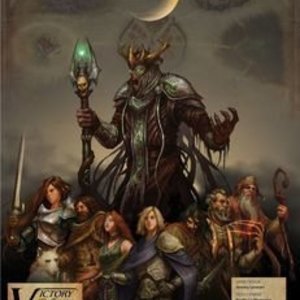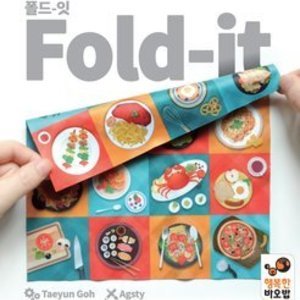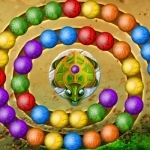
Marble Woka Woka
Games and Entertainment
App
Play Woka Woka, the world’s most dynamic and fun Zuma - style game! Join Woka the Turtle’s quest...
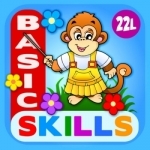
Abby Monkey Basic Skills Pre K
Games and Education
App
***** Winner of prestigious Recommended Seal awarded by Parents’ Choice Award Program *****...

Sky Sports for iPad
Sports and Entertainment
App
Just like Zlatan, Sky Sports for iPad is free and has won a shedload of awards (well, at least one)....
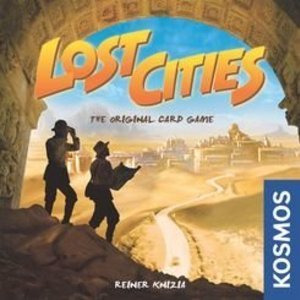
Lost Cities
Tabletop Game
Lost Cities is a card game in the Kosmos two-player series. The game consists of a single deck of...
Boardgames Cardgames GoodForTravelGames 2playerGames KosmosGames
Purple Phoenix Games (2266 KP) rated Darkest Night (First edition) in Tabletop Games
Jun 12, 2019
Once prosperous, your kingdom has fallen victim to a powerful Necromancer who has shrouded the realm in darkness. His minions traverse the land doing his bidding, and his army, as well as his powers, continue to grow. All hope is lost….or is it? Four heroes band together in a final attempt to defeat this evil being. Each brings unique powers and strategies to the table, and success will come in one of two ways – by defeating the Necromancer in direct combat, or by gathering Holy Relics and performing a ritual to undo his powers. But be warned: the Necromancer grows stronger with every passing moment, so be sure your chosen strategy is the right one. Otherwise you too will fall victim to the Necromancer’s might.
Darkest Night is a cooperative game where players take on the role of the heroes attempting to defeat the Necromancer. Each turn has 4 steps – Perform any start-of-turn actions, draw/resolve an Event card, perform one action, and defend against Blights (monsters). Each equipped with a unique set of powers, the heroes must work together to search the land for Holy Relics and destroy Blights before the kingdom is overrun. Once all of the heroes have had their turn, the Necromancer gets his turn, which entails advancing the Darkness track, moving towards the closest detected hero, and creating more Blights. Victory comes in two forms – ritual or combat. If the heroes collectively uncover three Holy Relics, they can use them in a ritual to break the Necromancer’s powers. Or if a hero gets strong enough, they could directly fight the Necromancer. If, at any point, the Monastery is overrun by Blights, the game ends in failure and the kingdom has fallen into darkness.
DISCLAIMER – This review is for the Darkest Night (First Edition) base game. There is a second edition, and several expansions, but I have not had experience with any of those, so my thoughts are solely based on the First Edition base game. -L
I’m just going to be up-front and let you know that I am not a huge fan of this game solo. The main reason is that this game is for four heroes, regardless of actual player count. So playing solo means that I have to control all four heroes. Controlling one hero, I can do. Controlling two heroes takes more focus, but is usually manageable. But controlling four heroes at once? Madness! At least for me it is. There is so much more for a single person to keep track of, and it can be pretty overwhelming. There are so many variables to keep track of, I often end up making mistakes – forgetting to draw Event cards, accidentally using one hero’s ability when it is a different hero’s turn, forgetting to give one hero a turn in a round because I thought they already had one, etc. If I am lucky, I will catch a mistake in-progress, or one turn later, and can rectify it. But to be honest, of all the mistakes I make while playing Darkest Night, I probably won’t catch 25% of them. Which can either make a game super easy, or super brutal. You might tell me, “Focus!” or “Pay better attention!” but believe me, I’m trying! I just feel like four heroes for one person is too much.
Patience is a virtue, but apparently I have none when it comes to this game. And by that, I mean that I feel like it takes an eternity to accomplish anything in this game. On your turn, you only get one single action. And movement is an action. Picture this – I am trying to move my hero to the opposite end of the kingdom (at least 2 spaces away). I am going to have to spend 2 complete rounds (active hero turn, other hero turns, Necromancer turn, x2) just to get there. And then once I finally get there, I have to wait for the 3rd round to even do anything in that location! I just get frustrated at the fact that something as simple as moving a few spaces takes multiple rounds to accomplish. Since everything takes so long to do, you have to be thinking so far into the future with every turn. That makes it difficult for me to strategize, and the game just feels so inefficient, especially in solo play, when you have to control all of the heroes. It can be tricky enough planning a few turns in advance for a single hero, but being in charge of all heroes just makes the job more complicated. And maybe I’m just not patient enough for this game, but I think that if every hero got two actions per turn, the game would be a lot more manageable.
This will come as no surprise to you, but I enjoy this game more in a group rather than solo. This game is cooperative, and I like being able to talk strategy with my fellow gamers, rather than trying to figure everything out for each of the four heroes by myself. Group play also allows me to focus my attention on one single hero instead of multiple, which makes the game feel less overwhelming to me. And perhaps the second edition or expansions address some of the issues I have with the game, but for the time being, Darkest Night is low on my list of solo games.
https://purplephoenixgames.wordpress.com/2019/01/04/solo-chronicles-darkest-night/
Purple Phoenix Games (2266 KP) rated Fossilis in Tabletop Games
Feb 17, 2021
Fossilis is a game of set collection and tile placement in which players are working to excavate and collect sets of dinosaur bones for display in museums across the world. To setup for a game, prepare the dig site as described in the rulebook. Populate the Score Track board with 9 random Skill tokens, 3 face-down randomly selected Event cards, and a Plaster pool based on the player count. Create a Market of Tool and Supply cards, as well as a Dinosaur Display. Each player receives a mat, Paleontologist meeple, and score marker in their chosen color. Pick a starting player, and in reverse turn order, players place their Paleontologists onto a corner tile of the dig site. The game is now ready to begin!
Every players’ turn has 3 steps: Actions, Market, and Lab. At the start of your turn, you have 4 Energy to spend on Actions. The available action choices are: Gain 1 Plaster (from the Plaster pool), Move up to 2 spaces (orthogonally or diagonally), Climb onto the Dig Site (if your Paleontologist was knocked off the board), Place 1 Sand tile (anywhere on the Dig Site), Dig 1 tile (slide a terrain tile 1 space in any direction), or Extract (excavate a bone/hammer). With the exception of Digging, all other Actions cost 1 Energy to perform. Digging 1 tile costs energy dependent on the type of terrain tile being moved. To dig Sand is 1 Energy, Clay is 2, and Stone is 3. To Dig, you select 1 tile that is orthogonally adjacent to your Paleontologist, and slide it 1 space in any direction you wish. Tiles that are pushed off the edge are claimed by that player, and can be used to purchase cards from the Market. It is possible for a Paleontologist to be pushed off the Dig Site, so watch out! To perform the Extract action, you will excavate a bone or hammer from an open pit orthogonally adjacent to your Paleontologist. Extraction costs Plaster dependent on the type of bone being collected. For example, extracting a tooth costs 2 Plaster, while a skull costs 6. Extracting hammers has no cost, and you immediately trade the hammer for one of the available Skill tokens in play. The Skill tokens provide benefits for the remainder of the game. Once a player has spent their Energy, they move to the next phase.
On your turn, you may buy 1 card from the Market: either a Tool or Supply card. These are purchased using the icons on any tiles you collected during the Action phase. Supply cards gain you immediate resources, while Tool cards are saved for use during a future Action step. After the Market phase is the Lab phase. You may claim a Dinosaur from the Display if you have at least one of the required bones for that Dinosaur. You can only ever have 1 Dinosaur in your Lab at a time, so strategize carefully. At any point during a turn, you can score the Dinosaur in your lab – either for full points if all required bones are present on the card, or partial points if you only have some of the required bones.
Events are triggered 3 times throughout the game when the Plaster pool has been depleted. The active player draws the top Event card, and follows the instructions on the card. Once an Event has been performed, the Plaster pool is refilled and play continues with the next player. After the 3rd event has been triggered, the Plaster pool is refilled one last time. When the last Plaster pool is depleted for this final time, the game ends. Players count up all their points, and the player with the highest score wins!
At first it may seem overwhelming, like there is a lot going on, but after a couple of turns the gameplay feels intuitive and streamlined. There are quite a few aspects to keep track of, but the overall flow of the game makes it feel clear and concise. During my plays, I have never once felt lost or confused as to what the next turn step is. The tight gameplay also lends itself to providing a variety of strategic options for players. Do you want to go for all the highest-scoring Dinosaurs, even though their bones take longer to collect? Or maybe you want to snag as many lower-scoring Dinosaurs as possible, since they should be faster to collect. You can earn end-game points based on Characteristic sets of Dinosaurs (carnivorous, herbivore, etc), so maybe you decide to focus on those sets. Or if you’re in a particularly confrontational mood, maybe you want to knock opposing Paleontologists off the Dig Site, causing them to ‘waste’ an Energy on a future turn just to climb back on into the play area. There really is no right answer as to what strategy is a sure-win, and I like that I can choose and adapt my strategies based on the current standings in the game.
Probably my favorite innovative mechanic in Fossilis is the 3D terrain and ‘digging’ actions. When setting up the game, bones and hammers are randomly scattered and distributed around the Dig Site before terrain tiles are added. So there is absolutely no way to know where you should dig for what you want! Just like a real paleontologist, you’ve got to give it your best guess. I have had some frustrating turns, spending lots of Energy to dig a tile just to find the space to be empty! Or maybe you dig and hit the motherlode, which just means you’ll probably have to fight off other paleontologists for the bones that you need. The 3D board adds another element of strategy that heightens the gameplay and makes it more immersive.
Let’s touch on components for a moment. They are AWESOME. Admittedly, I have the Kickstarter version, but I just love how well-produced this game is. The terrain tiles are nice and thick bakelite-esque tiles, and they are just dang fun to manipulate. The plaster and bones are small, but pretty detailed and sturdy for their size. The artwork on the cards is colorful and clear, the Paleontologist meeples are cute little wooden bits, and the cardboard bits are all good quality. Excellent production quality all around.
It should come as no surprise, based on my score, that I love this game. The gameplay is immersive and engaging, the mechanics add a neat twist to your normal set collection/tile placement game, and the ability to adapt strategy on the fly means that nobody is truly out of the game because of one bad turn. Purple Phoenix Games gives Fossilis a roaring 11 / 12. If you’re looking for a good dinosaur game, look no further. Yeah, they’re technically just bones here, but it still counts!
Purple Phoenix Games (2266 KP) rated Samurai Spirit in Tabletop Games
Jun 12, 2019
As a Samurai, you spend your life traveling across the land to help those in need. Most recently, you and a handful of other Samurai have been contracted by a small village to defend them against a clan of invading raiders. Only by working together, and by using your extensive training, will you succeed in keeping this village safe!
Samurai Spirit is a cooperative game of press-your-luck. Players take on the role of a Samurai, each with a unique power, and take turns drawing cards and fighting off the invaders or offering support to your fellow Samurai. Invaders can have recurring negative effects, so strategize wisely on how best to combat them and see how far you can push your luck each round. If you are able to survive through 3 rounds (waves) of invaders with at least one surviving farmstead and family, the Samurai are victorious and the village is saved! If any of the Samurai are killed, or the village has been completely destroyed by invaders, then the game is lost. As a solo game, Samurai Spirit plays essentially the same as in group play, with only 2 main differences – the solo player controls 2 Samurai instead of 1, and the support tokens from the unused Samurai are each available for use once during the game.
For such a neat theme, this game falls short for me. It seems simple enough, but there are areas of ambiguity in the rules that lead to some confusion. For starters, the text size is so small that I am not able to find any information at a quick glance! The text itself is not always clear either – like when, at the end of a round, the rules say to collect all cards used this round, does that include cards that have been discarded due to Samurai abilities? How about the cards of the Intruder stack that are presumably discarded after being revealed? The rulebook offers no clarification, and I honestly still don’t know the right answer.
The order/layout of the rules feels mismatched too – relevant information is not always grouped together, and I find myself flipping between several pages at a time trying to figure out one single thing. For example, in the ‘Fight’ action description, it says that if you reach your Kiai value exactly, you can activate your Kiai ability. You have to turn the page to a different section to see exactly what activating that ability means, and then you have to flip an additional 2 more pages to see what each individual Kiai ability is! Why not just put them all in one place? It would certainly be easier to understand if all relevant information was grouped together.
The prominent mechanic of Samurai Spirit is press-your-luck, and I would definitely say that this game is very luck-based. When setting up the game, the initial deck of cards is randomly selected and that can impact whether or not you are able to complete certain requirements each round – if there aren’t enough hat/farm/doll cards for each Samurai, you are guaranteed to incur a penalty at the end of every round. Actual gameplay is very luck-based too, and for me it feels like there are no good ways to strategize – your choices are all dependent on the luck of the draw. You can push your luck to draw more cards and use special abilities, but since you are suffering from recurring penalties each turn, it feels futile to keep going at a certain point.
For me, Samurai Spirit is repetitive and kind of boring – suffer penalty, draw card, and repeat until you eventually pass or the deck runs out. It’s like a too-complicated version of blackjack in which the deck is stacked against you. It’s such a bummer because the theme and artwork are neat, and the gameplay (in theory, at least) should be effective. But the actual execution is too reliant on luck to be successful.
I do quite a bit of solo gaming, but this game is never one that I willingly decide to play. I honestly only broke it out recently as a refresher for this review. Perhaps it is better at higher player counts, but since that is not where most of my gaming occurs, Samurai Spirit is a dud for me.
https://purplephoenixgames.wordpress.com/2019/02/06/solo-chronicles-samurai-spirit/
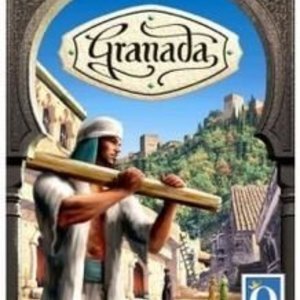
Granada
Tabletop Game
Granada – many artisans, traders and entire families have settled at the foot of the Sierra Nevada...
BoardGames VersionofAlhambra GatewayGames TileLayinggames
Purple Phoenix Games (2266 KP) rated Fold-it in Tabletop Games
Dec 28, 2021
Fold-It is a real-time dexterity puzzle game in which players are trying to fold their Recipe Cloth to match the current Order Card. Setup is simple – give each player a Recipe Cloth and 3 Star Tokens. Choose whether you want to play with the Basic or Advanced Order Cards (or a mix of both types) and shuffle the deck. Place a number of Fold-It tokens in the middle of the table to equal one fewer token than number of players. The game is now ready to begin!
Played over a series of rounds, players will be racing to complete the current Order Card the fastest. How? By folding their Recipe Cloth! Each Recipe Cloth is printed with a 4×4 grid of different dishes. The Order Cards each show a combination of 1-4 dishes. When an Order Card is revealed, all players will then try to fold and arrange their Recipe Cloth so that only the dishes from the Order Card are displayed. You can fold your cloth horizontally or vertically along the columns, and the cloth is double-sided to help accomplish your goal as well. Once you have folded your Recipe Cloth so that the dishes match the Order Card, grab one of the Fold-It tokens from the center of the table. When all the Fold-It tokens have been claimed, check each completed Recipe Cloth to verify that it is correct. If your Recipe Cloth matches, then you are in the clear! But if you made a mistake and had grabbed a Fold-It token, lose one of your Star tokens. *womp womp* The remaining player who was not able to grab a Fold-It token in the round discards one of their 3 Star tokens as well. The round is now over, and a new round begins by revealing the next Order Card. Play continues in this fashion until only one player remains with Star tokens. That player is declared the winner!
I have to admit that Fold-It surprised me, in a good way. I picked it up from a “Buy, Sell, Trade” Facebook group and really wasn’t expecting much from the gameplay. But when I actually got it to the table, I had a blast with it! The theme is cute, the gameplay is quirky, and it’s actually trickier than it looks. Some of the orders require you to fold the cloth in unique ways, and it can kind of be a brain burner. Add in the real-time racing element, and you’ve got an exciting game on your hands. Is it the most amazing and strategic game that I’ve ever played? No. But it’s pretty engaging for a light and fast filler game.
The components are pretty straight-forward. Cardboard tokens, nice sturdy cards, and actual cloth for the Recipe Cloth. The artwork is colorful and cute, and the tokens and cards will withstand many plays. I do especially like the Recipe Cloths too. The fact that they are actual cloth means that you won’t be worried about creasing issues from constant folding and unfolding between rounds and games. The cloths are double-sided as well to give you a boost for strategy as well. I will point out that all cloths are printed the exact same way, so it’s not like a Bingo board that varies between players. Everyone has the same tools with which to work each round, and everyone is on an even playing field that way. Nice components overall, in my opinion!
All in all, am I happy with my Fold-It purchase? Yes. It’s a quirky little filler game that is engaging and entertaining for all players. Yeah, there’s a player elimination element, but the game overall is so fast that the eliminated player(s) won’t be sitting around for long. Who knew that folding a piece of cloth could get your heart racing so fast? Fold-It is definitely a game that I’ll pull out when I need something quick and simple, or with which I can introduce people to the hobby. I guess if you play it too much, it would get kind of stale, but I don’t see that happening for me. Purple Phoenix Games gives this one a tasty 4 / 6.
Purple Phoenix Games (2266 KP) rated Cosmic Run: Regeneration in Tabletop Games
Jun 12, 2019
Space – the Final Frontier. Well, not anymore. You’re living in the year 2123, and space travel is not a novel idea. In fact, Earth has become uninhabitable, and the human race must find a new planet to call home! You and your team of explorers have taken to the galaxies to find a suitable replacement for the future of mankind. By befriending aliens and outmaneuvering rival explorers, your team will be credited with the discovery of new colonies on these distant planets. It’s a literal Space Race, so kick on that hyper-drive and take to the stars!
Cosmic Run: Regeneration is a competitive or cooperative dice-rolling game in which players are racing to earn the most victory points by being the first to discover new planets. It’s a Yahtzee-style push-your-luck game where you must roll certain sets of identical dice to advance your ships on the individual planet tracks. Dice can also be used to ‘hire’ aliens or find crystals, which can give you special abilities once per game. The planets must be discovered in a timely manner, though, because passing meteors could cause damage to, or even completely destroy, these planets – this is space, after all. Players earn victory points in three ways – by being the first to discover a planet, based on their position on a planet’s track if they are not the first to discover it, or by retiring sets of aliens. The player with the most victory points once all 6 planets are discovered is the winner! When playing solo, the game is played essentially the same way, with some minor differences. If the solo player discovers all 6 planets before any one is destroyed or before the meteor deck runs out, they win! However, if even a single planet is destroyed or they are not all discovered before the meteor deck runs out, the solo player loses.
I enjoy playing Cosmic Run: Regeneration as a solo game because it’s simple, but not easy. You’re just rolling dice, but you need a strategy. Do you try to advance quickly on the easiest tracks, or do you commit dice to more difficult tracks and hope that the dice rolls will be on your side? Be careful – once you commit a die to a certain track, it cannot be moved. I’ve played so many games where I commit dice to Planet 2 (2-of-a-kind) and end up rolling 3 more of the same number that could’ve been used on Planet 5 (5-of-a-kind) if I’d just committed them there in the first place! A lot of the game is dependent on the luck of the roll, but I feel like you still need a solid strategy to be successful. There’s a good balance between the two – I still feel like I’m in control of the game even though I can’t control how the dice will roll.
The one main difference between solo and group play is that the solo player is allowed to spend VPs to create ‘forcefields’ around planets. This is because in group play if a planet is destroyed, players score points for their track progress, and the game continues. For the solo player, however, if a planet is destroyed, the game is over. When playing solo, I can choose to spend either 5 or 10 VPs to create a forcefield around either 1 or all planets to protect them from meteors for one turn. Without this option in solo play, it would be impossible to win. The first 4 cards of the meteor deck are guaranteed to hit 4 different planets, so right off the bat you are starting at kind of a disadvantage. Each planet only takes 3 hits to be destroyed, so depending on how well the meteor deck is shuffled, the game would be over quickly if I weren’t able to create forcefields. It all comes back to strategy – you have to decide when to spend those VPs and what planets need protecting at any given point in the game.
That being said, scoring VPs is not really easy in solo play. To score points for a planet, you have to physically reach the planet surface – and that can take a while depending on how well you are rolling. You can hire/retire aliens for VPs, but alien cards have a die cost, so if you are hiring aliens all the time, those are dice you are not using to advance on planet tracks. And each turn, planets get closer to destruction if you don’t advance on their tracks fast enough. You can earn VPs when you land on a VP token space – you do not pick up the token if you pass it, you must land exactly on it. So all in all, you can’t afford to protect every planet every turn. You have to strategize carefully about how to risk your hard-earned VPs. The most frustrating thing is when I pay VPs to protect a planet that isn’t even the one that gets hit! 5 VPs gone that I usually can’t get back in a single turn. But that’s all part of the push-your-luck isn’t it? There’s no reward without risk, and sometimes it’s better to be safe than sorry. I’m usually not a very risky game player, but in this game I have to be. Playing it safe is not an option when I’m racing against the meteor deck.
Cosmic Run: Regeneration is a game of strategy with some healthy helpings of luck and risk-taking. You need a solid strategy, but one that is flexible enough to adapt to your dice rolls on any given turn. No game is a guaranteed win – if I win it’s usually at the last possible second. This game is easy to play, but not necessarily easy to win and that’s what keeps me coming back to play. Even as a solo game, it’s engaging and I think it’s pretty fun too!
https://purplephoenixgames.wordpress.com/2019/01/25/solo-chronicles-cosmic-run-regeneration/
